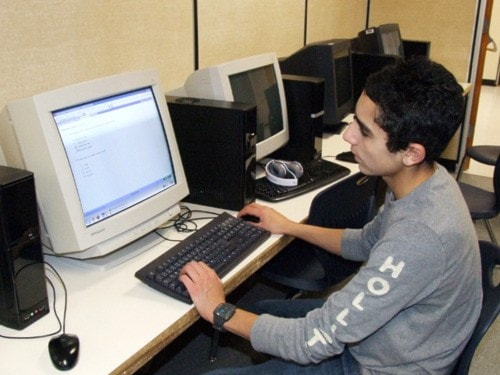Clearwater Secondary School students were attempting the dreaded government exams last week. Peter Persad, vice-principal of Clearwater Secondary School, explained that many of those exams are now being done electronically.
Until June 2012, students will have the option of writing government paper exams or taking them online for most exams. Some courses, such as Math 10, have already gone to a computer exam only.
After the end of this current school year, all government exams will be electronic. Non-governmental exams will likely continue to be done either way depending on the teacher and program. However, the school system in general is moving towards paperless operation where possible.
The exam room is set up with students spaced out so they don’t look at other monitors. iPods or cell phones are not allowed in the room, which has always been the case. Two teachers invigilate, or monitor, each exam session.
A student logs onto a Ministry of Education host site for each exam. When they have completed the exam, they submit it to the Ministry, which sends out a number to confirm the submission. The teacher writes down the number for each submission for verification.
The host sites are secure, and to date the exams have been trouble free and secure. The students have no access to other sites (Google, etc) or any of the files stored in the computer’s memory while logged into the host site. They don’t have access to spell checker, thesaurus or other similar tools.
Electronic exams are easier to mark, as the teachers don’t have to decipher the student’s handwriting. Students can use the cut and paste and format functions to edit their documents. This saves the writer’s time with organizing and helps keep the final answers neat and easy to read.
Some exams, like those with True/False or multiple-choice answers, provide a function that keeps track of the questions answered. This allows the student to skip questions and not mismatch them against an answer form, as happened with the “bubble” sheets.
There are five compulsory government exams for secondary school students. They are English 10, Science 10, Math 10, Social Studies 11 and English 12. There are government exams for certain other courses, mostly in Grade 12, but they have become optional over the past couple of years.
Students have been using computers since elementary school so they are quite adept at typing and are familiar with the edit functions. The use of computers has increased significantly within the school system and computer labs continue to expand.
